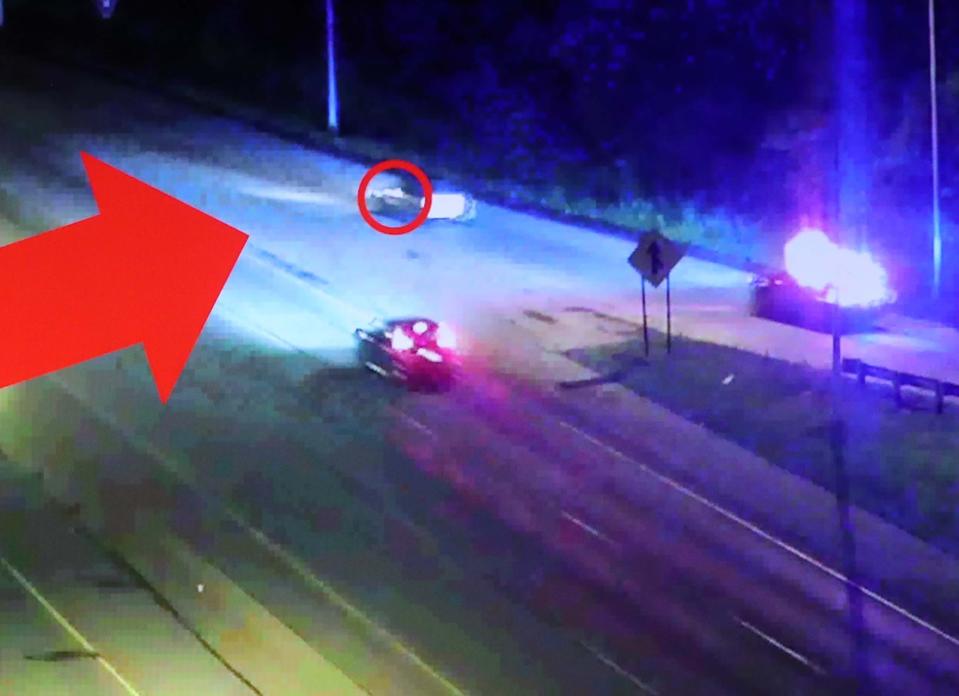ABJ editorial ignores facts in Jayland Walker case | Kevin Davis
This is in regard to the April 30 editorial “To move Akron forward, there can’t be another Jayland Walker tragedy.”
There are many agenda-driven comments in this piece that show a clear lack of understanding of the facts.
We know Walker was depressed about losing his fiancee in a crash. We know he talked to a police officer he knew as a friend about how you get police to shoot at you or “suicide by police.”
BCI report: What we're learning from the state's investigation into Akron police shooting of Jayland Walker
We also know Walker’s “friend” took him shooting and showed him how to load and fire a pistol after the fiancee’s death. Walker then purchased a 9mm pistol and ammunition.
Walker precipitated a police chase the day before the shooting.
Before the incident, we know Walker drove around multiple area cities, including returning to the city where he was chased the day prior.
After an attempted traffic stop of Walker by Akron police was called off, Walker drove back to the same area where it originated and fled police again.

It’s a fact Walker fired out of his car while police were pursuing him. He didn’t just “fire a shot.” Glock pistols eject back and to the right. The recovered casing was ejected out the window.
Pursuing officers broadcast that the subject in the car had fired a shot.
By the legal standards, Tennessee v. Garner and Scott v. Harris, Walker was a violent fleeing felon at this point. Deadly force could have been used to bring him to justice, if the officers thought it was necessary.
After he exited his vehicle, Walker turned around twice, with his hands going to his waistband before he was shot.
Officers can fire when they reasonably believe that they are being threatened with death or serious bodily injury.
In Ohio, State of Ohio v. White provides case law on the use of deadly force.
“In deadly-force cases involving both armed and unarmed suspects, courts have accepted the action reaction principle on facts justifying the officer’s anticipatory use of his weapon to protect himself. In other words, a nascent threat can be sufficient; it need not materialize to the point of harm,” the Ohio Supreme Court ruled in 2013.
Thus, the use of deadly force is presumptively reasonable when the officer could reasonably have interpreted the suspect’s movement as “reaching for a weapon,” a court of appeals ruling in the same case stated.
“With respect to the principle that a serious and imminent threat to an officer’s safety will permit him to respond with gunfire, the critical point is precisely that the suspect was ‘threatening’ — threatening the lives of the officers,” the appeals ruling said.
Judges further wrote that the law “does not require police officers to wait until a suspect shoots to confirm that a serious threat of harm exists. Officers need not be absolutely sure of the suspect’s intent to cause them harm — the Constitution does not require that certitude precede the act of self-protection. Rather, it is the perceived threat of attack by a suspect, apart from the actual attack, to which the officer may respond preemptively. If his perceptions were objectively reasonable, he incurs no liability even if no weapon was seen, or the suspect was later found to be unarmed, or if what the officer mistook for a weapon was something innocuous.”
In a life-threatening encounter, officers can fire as fast as one round every quarter of a second. That means four rounds in one second, and 16 rounds in four seconds. A Glock 19 holds 16 rounds, a Glock 17 holds 18 rounds. Each pistol can be shot empty in less than five seconds.
In these events, officers experience “perceptual narrowing” including auditory exclusion, wherein they may not hear other officers’ shouts or shots, and “tunnel vision,” which focuses their central vision on the threat and may limit peripheral vision of other officers.
More than 48,000 persons commit suicide in the United States each year.
More than 50% commit suicide with a firearm.
“Suicide by cop” or “police-assisted suicide” accounts for a large and growing percentage (36% in one study) of deadly police shootings each year.
Suicide by cop: What is it and how should police respond?
Jayland Walker’s actions, movements and motions led to his death by creating circumstances that any reasonably prudent and well-trained officer, in those exact same circumstances, would have found life-threatening.
It seems the same people so adamant about the Ohio Bureau of Criminal Investigation taking over Akron’s officer-involved shooting investigations are the same ones who are the most upset with the facts BCI documented in its investigation.
Facts used to matter in journalism. Not anymore
Kevin R. Davis is a retired Akron Police Department detective and author of Use of Force Investigations: A Manual for Law Enforcement. He is a court-recognized use-of-force expert who was inducted into the National Law Enforcement Hall of Fame in 2019.
This article originally appeared on Akron Beacon Journal: Opinion: ABJ editorial ignores facts in Jayland Walker case

